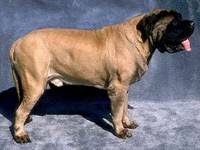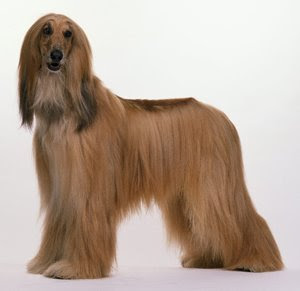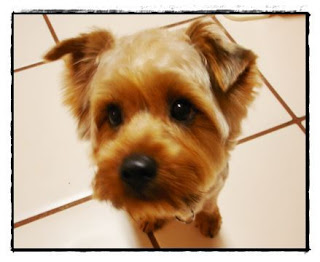Akita InuAppearanceThe breed stands 64 to 70 cm at the shoulders. Females weigh anywhere from 34-50kg. Males are 34-54kg. The Akita Inu come in only five colours: Red, Fawn, Sesame, Brindle, and Pure White. All except white must have whitish hair on the sides of the muzzle, on the cheeks, the neck, chest, body and tail. Black masks, as seen in the American Akita, are not permitted in the Japanese Akita Inu.
All colors are accepted in the American Akita. The Pinto color is not accepted as a Japanese Akita color, but is as an American Akita color. In the U.S., some breeders interbreed the original Japanese type with the heavier American type, which is larger, and allows more colors. It is felt by some that combining the two types leads to improved appearance and genetic health by increasing genetic diversity. In the United States, there is only a single Akita breed registered by the American Kennel Club, whereas they are separated into two breeds in every other country in the world except Canada. In all other countries the breed has been separated into two breeds: the Akita Inu and the American Akita. However, the American Akita is seen by some American breeders as being a different breed than the Japanese and these breeders advocate a splitting of the one breed into two.
Akitas possess a double coat, with a dense straight undercoat, and a thick outer coat. This coat makes the dog waterproof, as well as being well-equipped for the fierce winters in northern Japan. Due to the thickness of their coat, the breed requires daily grooming, and also an awareness of the dog's heavy shedding, especially during warm weather.
The Japanese Akita Inu is a loyal, docile and aloof. They are well known for being excellent house dogs, they are clean and quiet, only barking when there is something to bark about. In general they are very friendly and easy going dogs.
Health
MortalityAkitas in UK and USA/Canada surveys had a median lifespan of about 10 years, which is similar to other breeds of their size.
In a 2004 UK Kennel Club survey, the most common causes of death were cancer (32%), cardiac (14%), and gastrointestinal, including bloat/torsion (14%).In a 2000-2001 USA/Canada Health Survey, the most common causes of death were cancer (21%), GDV (=bloat/torsion, 21%), musculoskeletal (15.5%), and autoimmune (7%).
MorbiditySome of the health conditions known to affect this breed include:
- Canine herpesvirus, a strain of the Herpes virus that happens to affect canines
- Gastric dilatation volvulus (GDV), a condition associated with bloat
- Pemphigus, which causes the autoimmune system to attack the dog's skin (leading to pustules)
- Progressive retinal atrophy (PRA), an adult-onset condition which gradual degeneration in the eye cells (i.e. rods & cones)
- UveoDermatological Syndrome (UDS)
- Sebaceous adenitis, an autoimmune condition which attacks and destroys the dog's sebaceous glands
- Canine Hip Dysplasia
- Hypothyroidism
- Hyperkalaemia As a breed, Akitas have abnormally high blood potassium concentrations compared to other breeds.
- Heart size As a breed, Akitas have an unusually small heart for their size. A number of Akitas have died while being operated, due to the use of a normal dose of general anaesthetic for a canine of that size, a dose which ultimately proved excessive and fatal to the Akita. For that reason, to avoid anaesthetic-induced death, only the bare minimum dose of general anaesthetic sufficient to produce anaesthesia should be used when an Akita requires general anaesthesia.
Gastric Dilatation VolvulusAkita owners should take special note of the high incidence of GDV (Gastric dilatation volvulus) in this breed. Excess gas trapped in the dog's stomach causes "bloat." Twisting of the stomach (volvulus or "torsion") causes or is caused by excess gas. GDV is an emergency condition requiring immediate veterinary treatment. Akita owners should be alert to the symptoms of GDV and know the location of the nearest emergency veterinary facility.
HistoryThe Akita's ancestors were dogs used by matagi for hunting. These dogs, usually called matagi inu, were not as large as modern Akita dogs. Many of these dogs were used as guard dogs. Many were used to guard the emperor and his children. They were also used for hunting bears, usually trained as mated pairs, with a pair of eagles. The two dogs would attack the bear as it was distracted by the eagles in the air. As a result of this hunting, hundreds of akita dogs were killed by the 120 stone yezo bears which they were commonly used to hold at bay.
Recent DNA analysis found that the Akita was among the most ancient dog breeds.
Edo PeriodIn the Edo Period, Dewa Province (present-day Akita prefecture) was ruled by the Satake clan. Since the Satake were tozama daimyo (considered potentially rebellious), they received severe restrictions by the Tokugawa Shogunate in all military areas. The clan decided to encourage dog fighting around 1630 in order to make it possible for the samurai to retain their aggressive edge in a way that would not offend the shogunate. Dog fighting became especially popular in the Odate area. Dog fighting enthusiasts in the area began to interbreed matagi inu with dogs indigenous to the area. These dogs, which later turned into the Akita, were called Odate inu at that time.
Before World War IIAfter the Meiji Restoration, people began to breed Akita with many dogs from other regions in Japan, such as the Tosa. The Meiji Restoration also ended Japan's closed door policy, and large, western dogs began to enter Japan. As a result, Akita were also bred with German Shepherds, Great Danes, and Mastiffs. This resulted in the breed losing many of its spitz-like characteristics. Akita were later bred with Hokkaido and Karafuto dogs (also known as the Sakhalin Husky), which were introduced to mainland Japan after the First Sino-Japanese War.
In the Taisho Period, people such as the mayor of Odate Town began a movement to preserve the Akita breed. By this time, the Akita had begun to turn into a mixed breed as a result of excessive breeding with other dogs. Watase Shozaburo, a Japanese zoologist that successfully proposed the Law for Protection of Natural Monuments (天然記念物保護法) also worked towards preserving the Akita breed. As a result, the Akitainu Introduction Foundation (秋田犬保存会) was created in May 1927 by the mayor of Odate, and nine Akita dogs were designated as natural monuments in 1931. In 1932, the faithful Akita dog Hachikō was featured in an article in the Asahi Shimbun newspaper, which contributed to the popularity of the breed. When Helen Keller visited Akita prefecture in 1937, she expressed that she would like to have an Akita dog. An Akita called Kamikaze-go was given to her within a month. When Kamikaze-go later died because of canine distemper, his brother, Kenzan-go, was promptly sent to her. By 1938 a breed standard had been established and dog shows had been held, but such activities stopped after World War II began.
The War and its aftermathDuring World War II, the number of Akita dogs greatly diminished because of the lack of food. There were also orders to capture all dogs except German Shepherds in order to use their fur for warm army uniforms. Many people bred Akita with Alsatians to avoid capture. When the war ended in 1945, there were fewer than twenty purebred Akita dogs in Japan.
However, the Akita became quite popular during the postwar period. Many occupation soldiers liked the Akita, because it was by far the largest Japanese dog. The fact that Helen Keller had an Akita also became well-known when she came to Japan in 1948 and thanked people in Akita for the dogs she was given. Most of the Akita dogs at this time had many German Shepherd-like characteristics. These dogs are currently known as Dewa line, or Dewa type Akita.




















